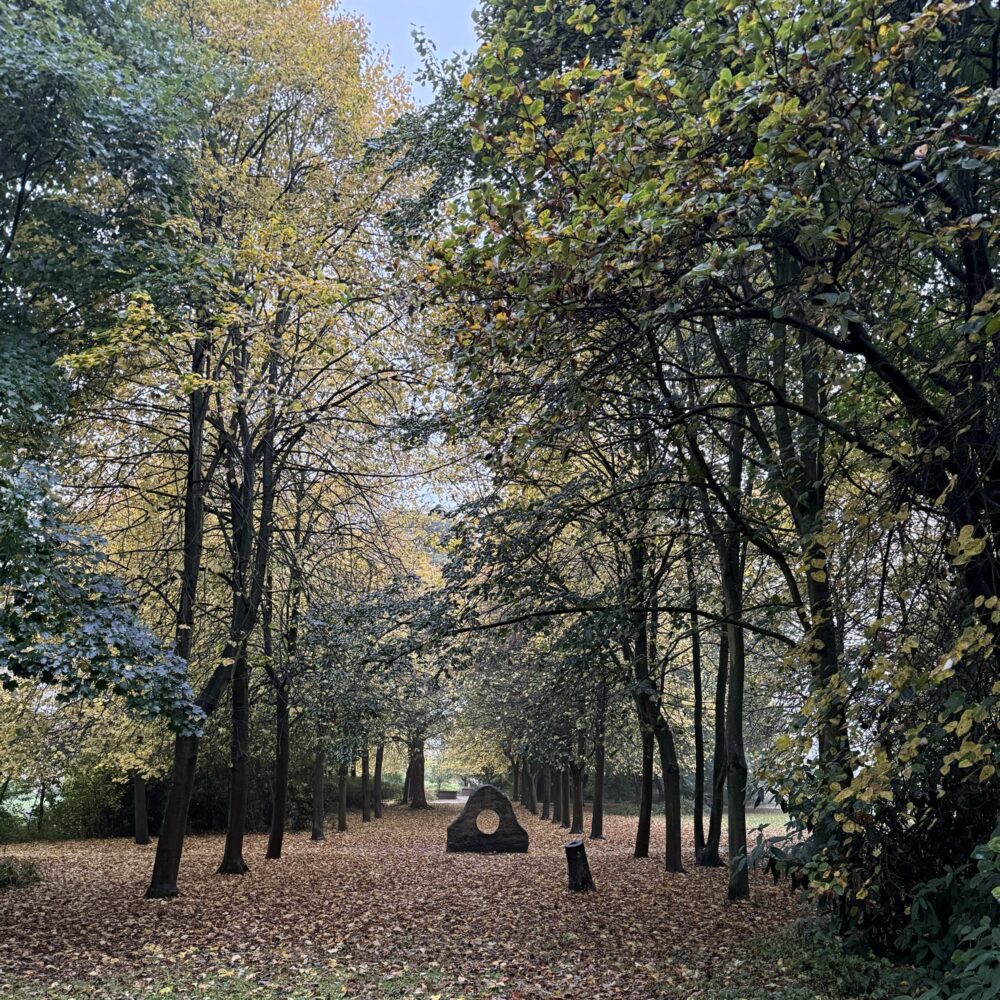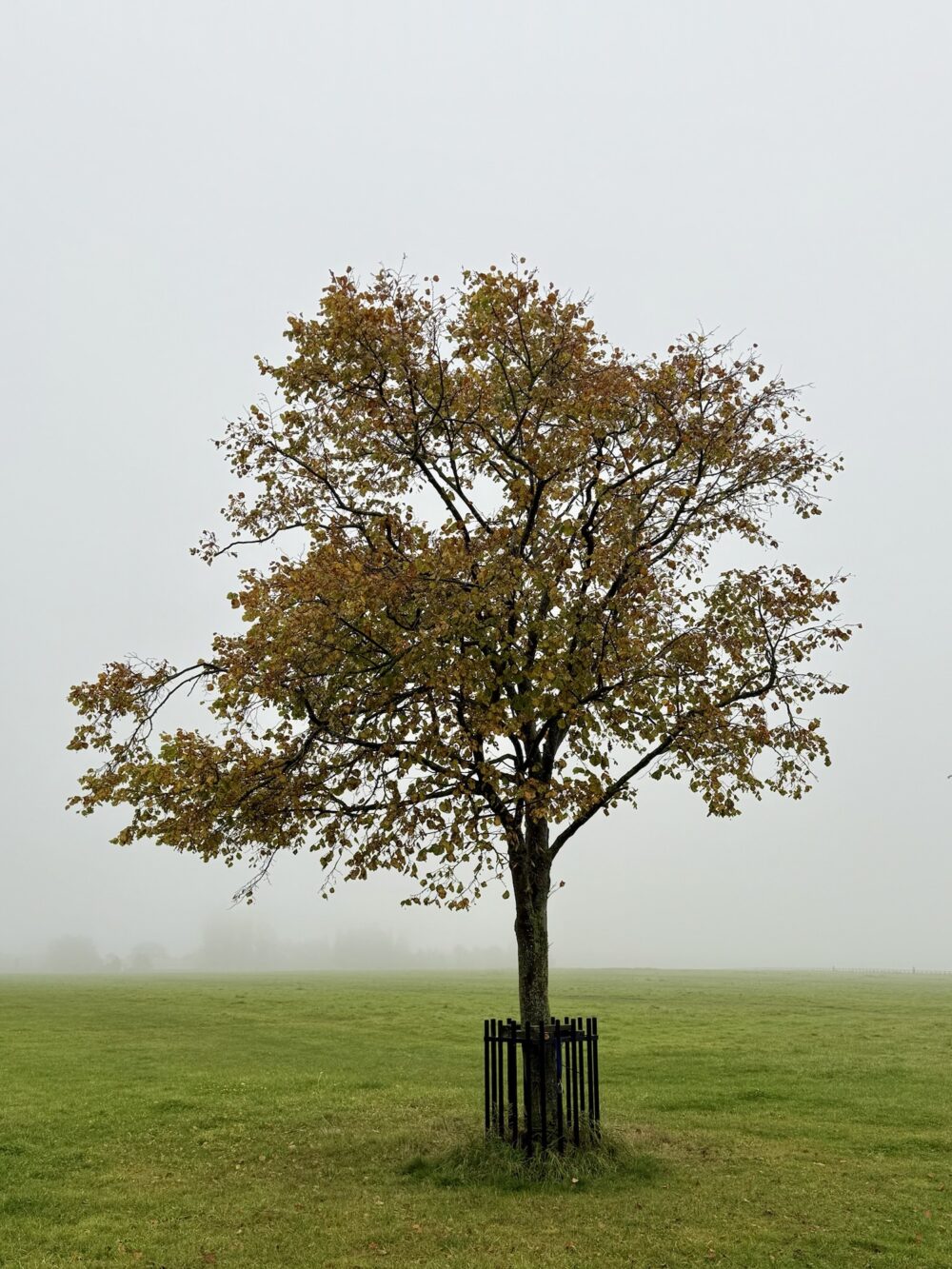
Infodemics
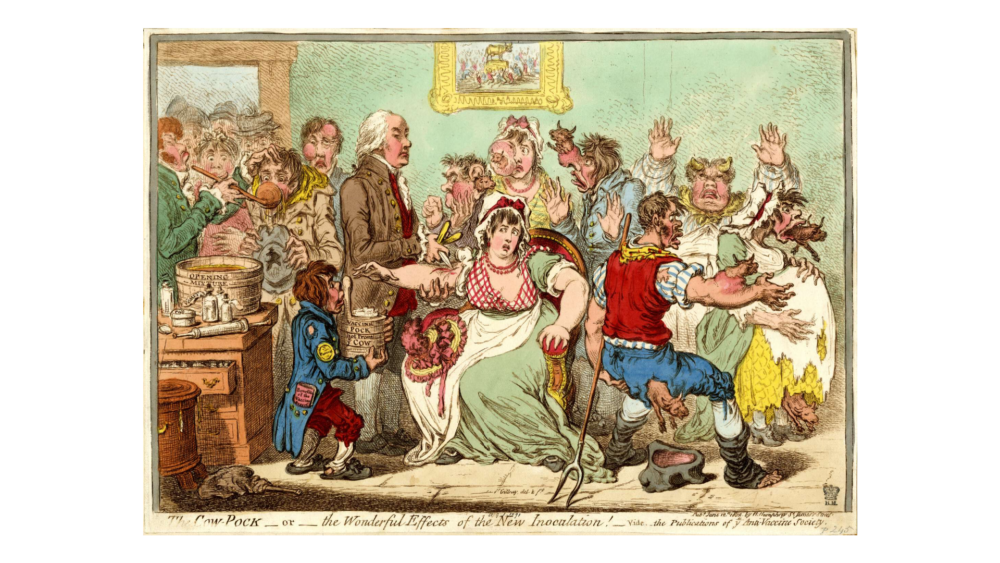
I don’t often link to journal papers, but this one by Sabrina Jin et al in The Lancet Infectious Diseases really tickled my fancy. It introduces the concept of ‘infodemics’—’an inundation of information accompanying an epidemic or acute health event’—and makes the case that these have always existed. It’s a neat corrective to the societal panic about the spread of health misinformation on social medical, suggesting that not much has really changed.
There were two bits that I especially enjoyed.
The first was the painting at the top of this post—and 1802 etching by James Gillray of small cows erupting from the sites of the cowpox vaccination, lampooning a common reason for vaccine hesitancy. Concern about vaccines is far from new!
The second was the challenge back to the medical profession about our own indulgence in disproven myth, using perhaps the best imaginable public health example (ahem):
Although medical institutions often praise John Snow, some aspects of Snow’s work have been altered as part of public health mythology. According to popular renditions of his biography, Snow created a dot distribution map that connected patterns of cholera mortality with the Broad Street water pump used during the 1854 cholera epidemic in London, UK. These observations allegedly led to the removal of the pump and halted the outbreak in the surrounding community. However, close examination revealed that the cholera outbreak had already peaked before Snow’s discovery, indicating that the reduction in mortality was not directly associated with removal of the pump. Despite this inaccuracy, Snow’s work—including its mythicised features—continues to be celebrated as an integral part of medical history. This continued celebration of historical falsehoods indicates the enduring existence of mythology and inaccuracies, even among medical and public health professionals.
Splendid work.
This post was filed under: Health, James Gillray, John Snow, Medicine, Public Health, Sabrina Jin, The Lancet.
Kindness to all dumb animals
Your preparation for a future Only Connect round about people commemorated by fountains on Newcastle’s Great North Road continues. Having ticked off WD Stephens and ED Colvill, our attention is inevitably drawn to William Laing’s memorial fountain:
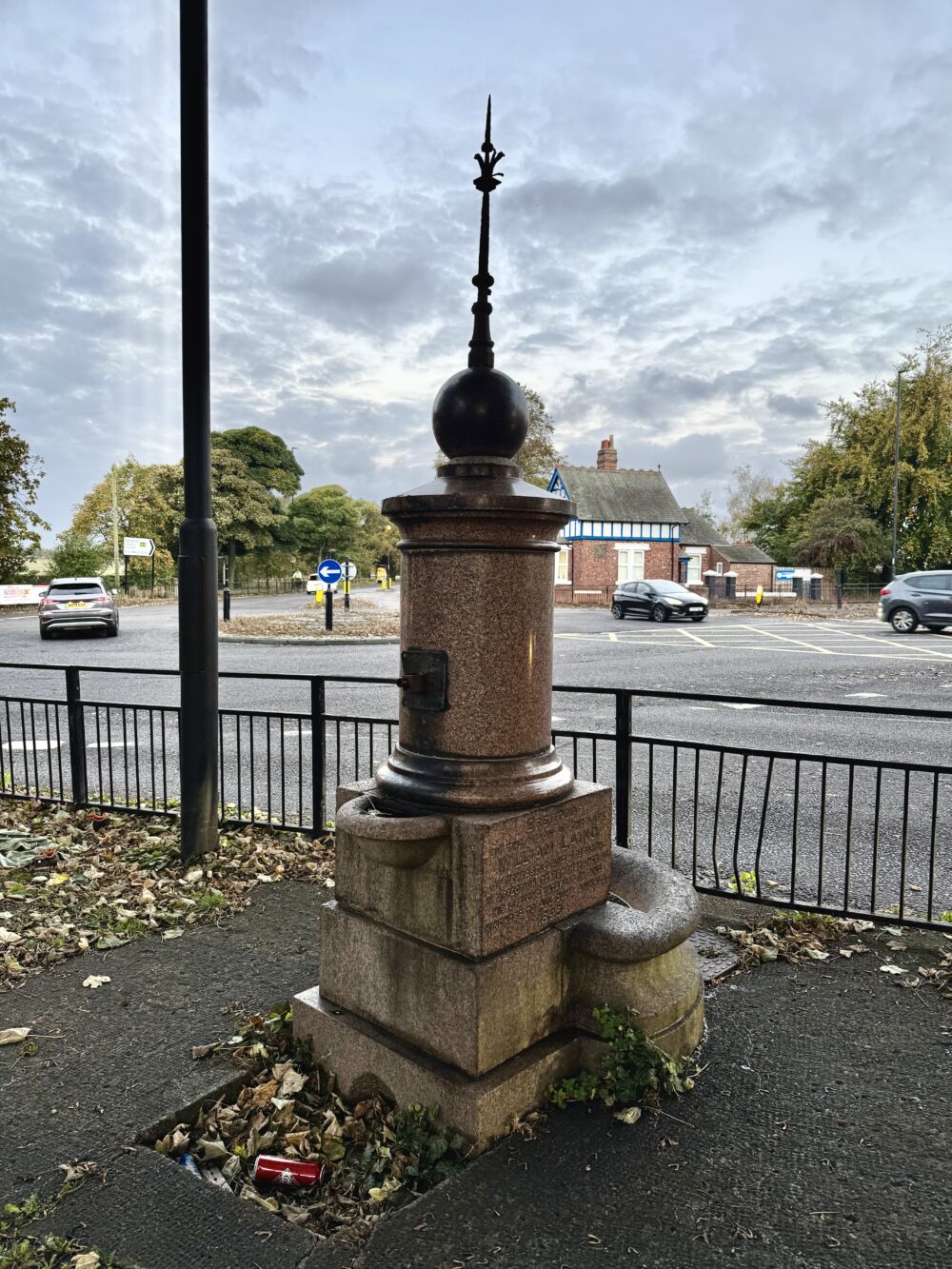
The inscription reads:
Erected by the widow of the late William Laing of Newcastle and Gosforth in affectionate remembrance of his lifelong interest and kindness to all dumb animals. 1895.
Laing was a business partner of Stephens, so perhaps memorial fountains were just de riguer in their social circle. Laing was also one of the founders of the Town Moor Temperance Festival, which has morphed these days into The Hoppings, which ordinarily takes place just across the road from this fountain.
The Laing art gallery in town is associated with the wine merchant Alexander Laing rather than the shipbuilding William Laing commemorated by this fountain. I’m not sure whether the two were related.
This post was filed under: Photos, Newcastle upon Tyne, William Laing.
Six days you shall labour
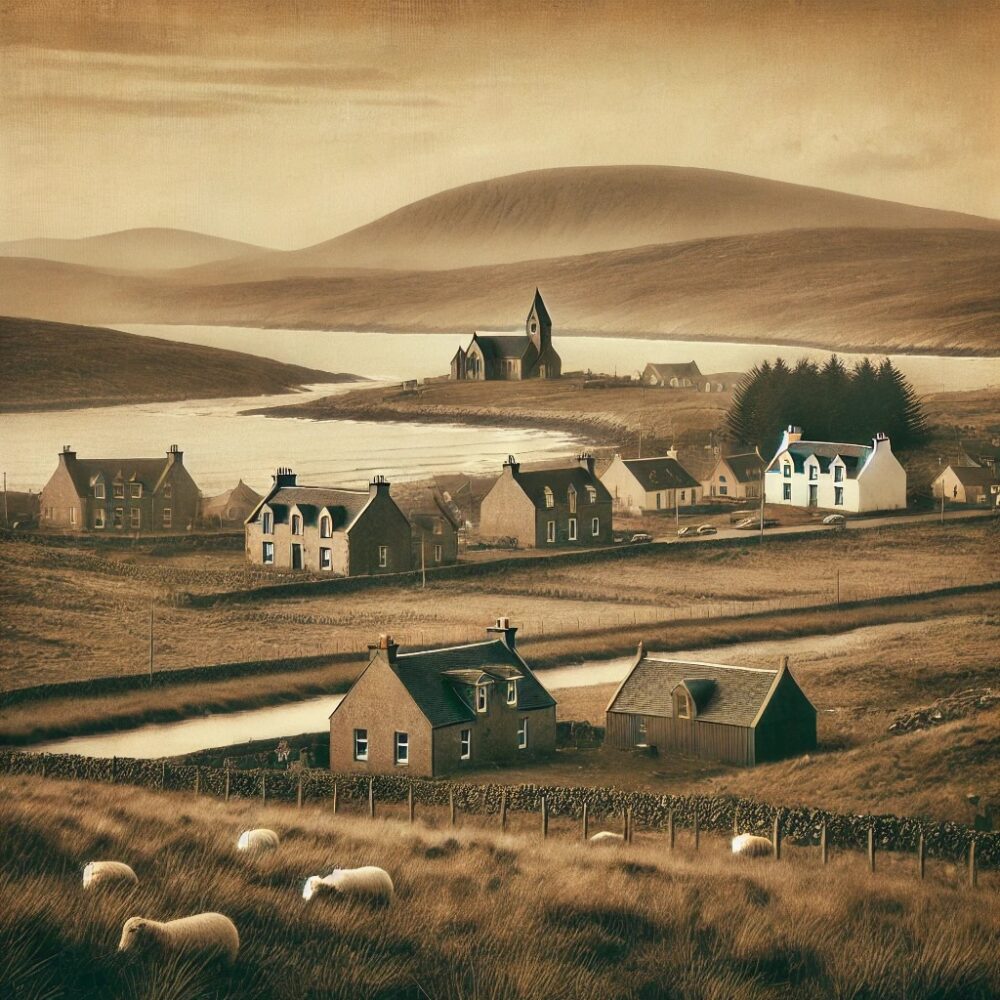
According to BBC News:
A Scottish island community is divided over a supermarket’s plans to open on a Sunday.
The Tesco branch on the Isle of Lewis in the Outer Hebrides has started holding consultations with staff and residents about opening seven days a week.
The island, which has a population of about 20,000, has a long tradition of observing the Sabbath day, meaning that some shops – including both supermarkets – currently keep their doors closed on a Sunday.
There are many good reasons for Tesco to be closed on a Sunday, but I wanted to rant about the claim that ‘a tradition of observing the Sabbath day’ is one of them.
In Christianity, the Sabbath day is the seventh day of the week—Saturday. Observers are supposed to follow God’s example in Genesis and rest on the Sabbath day.
Christians then devote the first day of the week—Sunday—to worship. This is distinct from the Jewish tradition of resting and worshipping on the Sabbath; Christians worship on the first day rather than the Sabbath as a commemoration of Christ’s resurrection on a Sunday.
This was drummed into me endlessly in GCSE Religious Studies, and I’ve never forgotten it. No wonder I won the Religion Cup several years running.
Except… the Isle of Lewis is Presbyterian, and the Free Presbyterian Synod has declared Sunday to be the Sabbath for Presbyterians. God may have rested on the seventh day, but Presbyterians don’t. They even have a strict rule against using the internet on Sundays, to the extent that their website closes each Sunday.
So, I was wrong, and I’ve learned something new about the world.
As an aside: you might imagine that ‘Saturday’ is derived from ‘Sabbath day’, but it’s actually from the Roman god Saturn—wrong religion, and all that. The same does not hold true in Catholic countries: sábado (Spanish and Portuguese), sabato (Italian) and sobota (Polish) all come directly from ‘Sabbath’. Life must get confusing for Presbyterians in those countries!
The image at the top of this post was generated by DALL·E 3.
This post was filed under: News and Comment, BBC News, Christianity, Religion.
Sustaining the ego
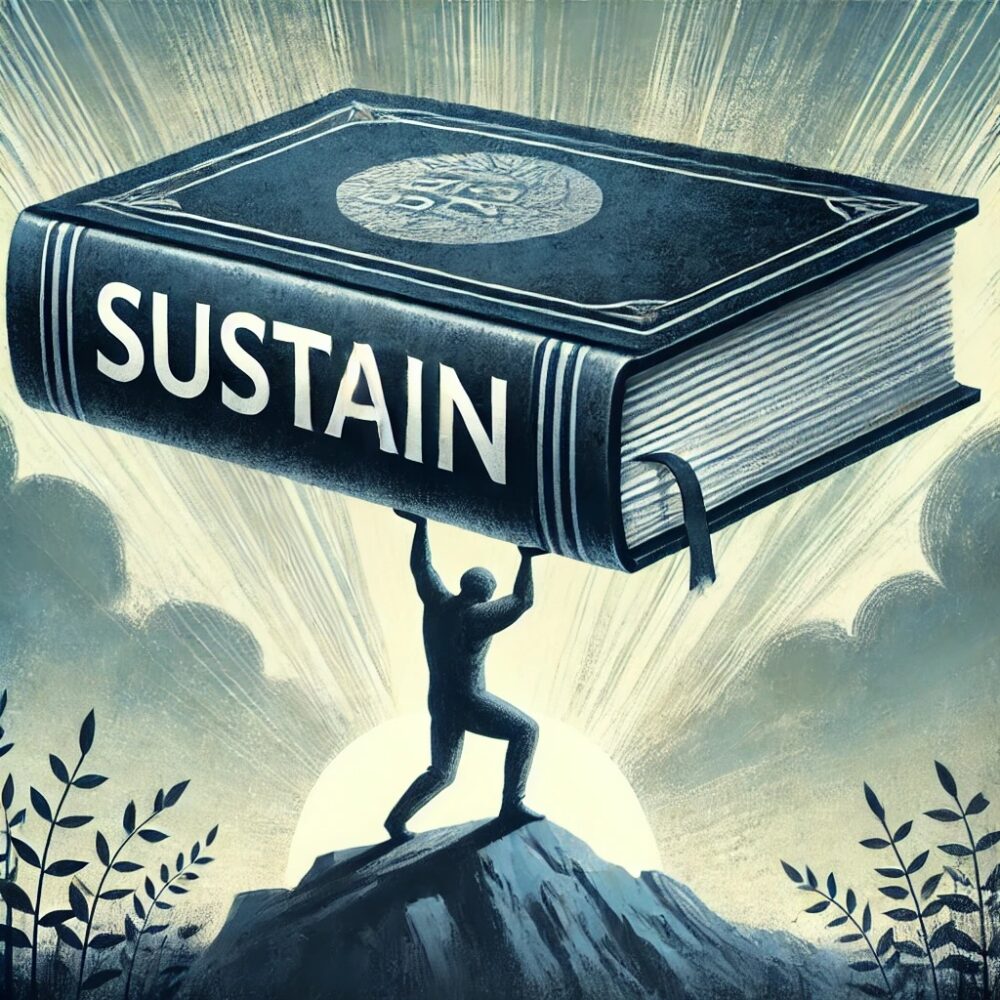
The disreputable former former former Prime Minister of the UK was quoted in their least-favourite newspaper this week:
I thought it was the wrong thing to do, and a bit petulant. Plenty of other European leaders sustain referendum defeats and carry on with their duties.
Once I’d processed the lack of self-awareness inherent in the hypocrisy of a certain eight-letter adjective, I came to reflect on the oddness of the word ‘sustain’. Things that ‘sustain’ us support or uphold us; yet we ‘sustain’ injuries and insults. How can it mean such different things?
It turns out that the word is derived from Latin: ‘-tain’ comes from ‘tenere’, which, as even a passing knowledge of European languages will tell you, means ‘to hold’. The ‘sus-’ comes from ‘sub’, as in ‘under’. So, ‘to sustain’ is to hold something up, supporting it from underneath.
Immediately, the two senses reveal themselves: things can support us, or we can do the supporting. While the former is largely positive, the latter is more complicated. We can hold together a friendship, and find that sustaining it is a wholly positive experience. Or we can hold up a weight that’s threatening to crush us, with almost unbearable burden and discomfort. The rich tapestry of life means that sustaining something can sometimes be both fulfilling and impossibly difficult at the same time.
To give the pompous wally his due, in the context of the quotation, ‘sustain’ could be read in the plain sense of enduring the defeat, or as a jibe about supporting the defeat by being a bit rubbish.
‘To sustain’ contains multitudes. It’s nice to see the complexity and ambiguity of the human experience reflected in language sometimes.
The image at the top of this post was generated by DALL·E 3.
This post was filed under: Miscellaneous, Language.
Trump watch
Before I read this Financial Times article by Bryce Elder, I didn’t know:
- That ‘Trump’ branded watches existed.
- That anyone would try and sell such watches for $100,000, let alone successfully.
- What a “tourbillon” is, “and, though it probably does nothing, people appreciate the extra engineering required.”
- That a 75% gross profit margin on a luxury watch is not unusual.
Every day is a school day.
This post was filed under: Politics, Technology, Bryce Elder, Donald Trump, Financial Times.
Well and honourably known
I left you with a cliffhanger on Monday, with my post about the WD Stephens fountain. I’m sure you haven’t slept since!
I told you that the placement of the WD Stephens fountain had required another one to be moved out its way… and this is the fountain that had to move:
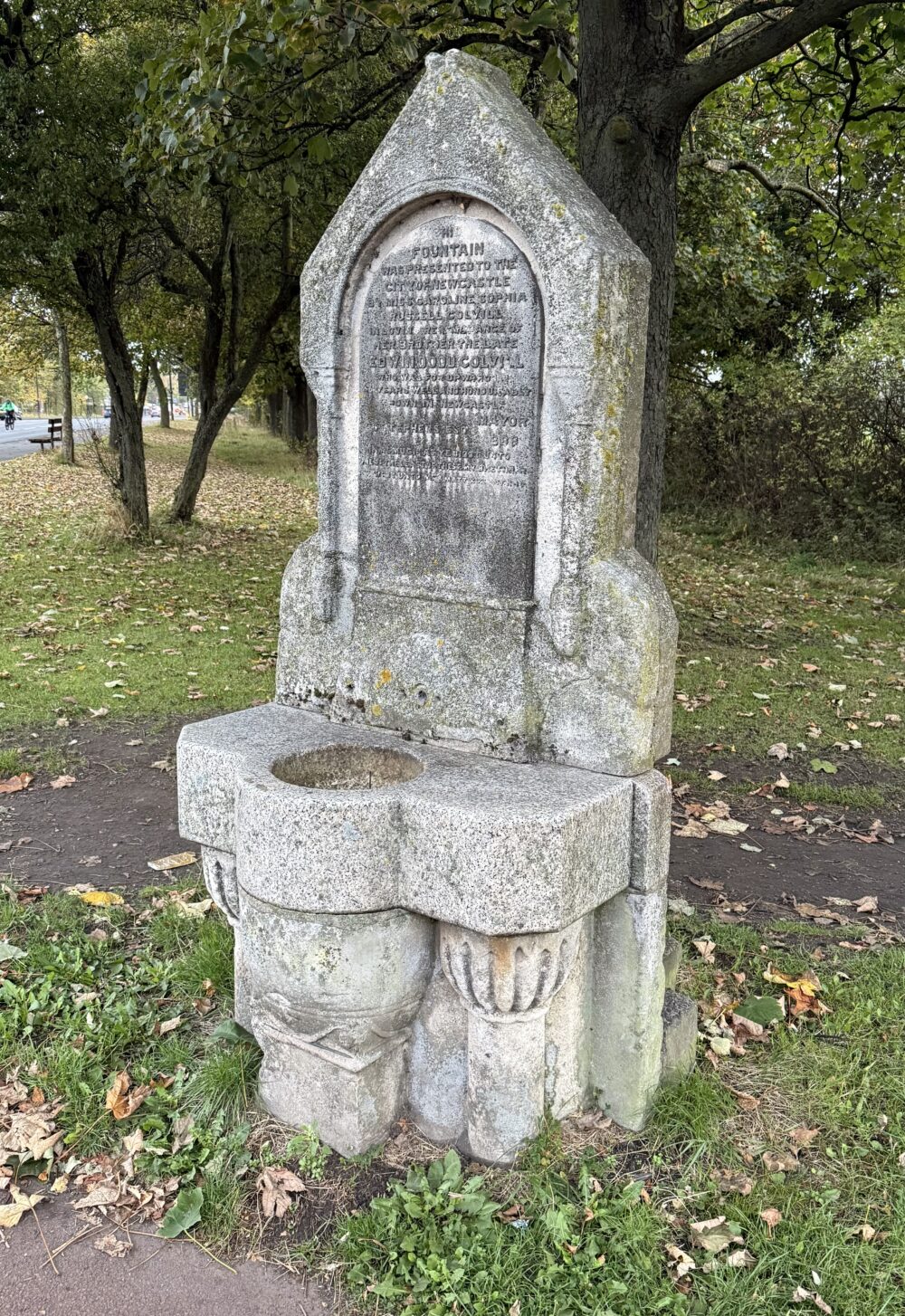
A 1889 granite tribute to Edwin Dodd Colvill, located just up the road from the WD Stephens fountain. The text reads:
This fountain was presented to the city of Newcastle by Miss Caroline Sophia Russell Colvill in loving remembrance of her brother the late Edwin Dodd Colvill who was for upwards ????? years well and honourably known in Newcastle.
In the section below that, I can make out the words ‘Mayor’, ‘Stephens Esq’ and ‘1888’. Since we know from the WD Stephens fountain that he was the mayor in 1888, I suspect this recorded the commissioning or unveiling of the statue.
Below that, although there are a lot of missing letters, I’m fairly sure there is a quote from Matthew 25:
Inasmuch as ye have done it unto one of the least of these my brethren, ye have done it unto me.
Perhaps undermining the inscription, unfortunately nobody seems to know anything but the barest details of Colvill’s life—he may have been well known at the time, but he isn’t any more, which is, I suppose, a fate to which we all succumb eventually, fountain or none.
This post was filed under: Photos, Edwin Dodd Colvill, Newcastle upon Tyne.
Smoke and speeding bullets
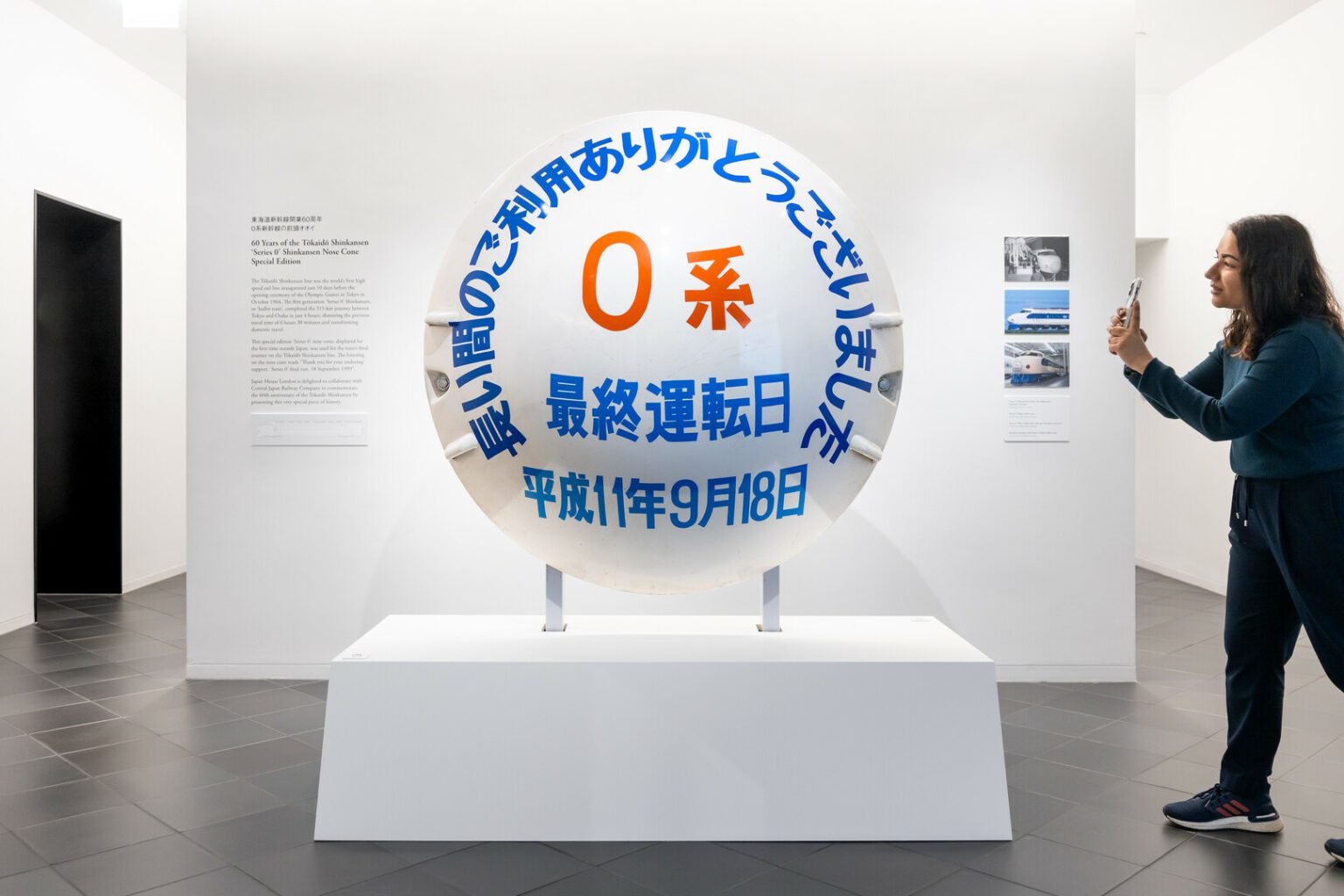
60 years ago, the ‘bullet train’ first ran on Japan’s newly built East Coast Tōkaidō Shinkansen line. In celebration, a nose cone from one of the first trains has just gone on display at Japan House in London. I’m not sure I’ll go and see it, but news of the exhibition did make me ponder.
When the Tōkaidō Shinkansen line opened in 1964, trains ran at a maximum of 130mph—faster than Britain’s East Coat Mainline, but not by all that much. Our (diesel-powered) trains ran at 100mph on sections of the line.
By the time the first generation of bullet trains retired in 1999, the line was running at a top speed of 168mph, and the now-electrified East Coast Mainline had bumped up to 125mph.
Thanks to a commitment to continuous improvements, today the Tōkaidō Shinkansen line runs at 177mph. Yet, the East Coast Mainline’s top speed hasn’t increased in the last 48 years. A line whose speed was once competitive has since stagnated.
But the UK certainly beat Japan on one big improvement: smoking was banned on East Coast Mainline trains in 2005, but astonishingly persisted—albeit in designated on-board smoking rooms—until March this year on the Tōkaidō Shinkansen line.
This post was filed under: Health, Technology, Public Health, Public Transport, Trains.
Victoria Tunnel

I’m pleased to report that the Victoria Tunnel is, thankfully, in somewhat better condition than its information board.
This post was filed under: Photos, Newcastle upon Tyne.
